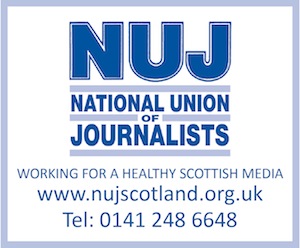BBC Gàidhlig journalist, Alasdair Fraser, takes a look back at interesting and unusual stories covered by the BBC TV series, Nationwide, between 1969 and 1983. The first part (covering the west of Scotland) of the three-part series was broadcast last week, on BBC ALBA. This evening, it is the turn of the east of the country, being broadcast at 2100.
Made by the BBC, assistant producer, Colin Macleod, answers the questions…
Who commissioned the series?
When we were working on our archive series, ‘ALBA: 1970s;, for BBC ALBA, our exec producer, Una MacDonald, realised what a fantastic series Nationwide had been and the number of fascinating stories which people had only seen once.
One particular story from 1974 which caught her attention was the late Sir Iain Noble’s campaign to introduce Gaelic road signs to Skye.
It wasn’t just the story that was fascinating but the way in which it was produced and she thought BBC ALBA’s audience would love to see more of Nationwide.
Una sought permission through the BBC to access the content, Alan Esslemont, BBC ALBA’s commissioning editor agreed this would be the kind of series which would appeal to the channel’s audience and commissioned it, and the results are now being broadcast.
I was tasked with bringing the series to viewers and Una and I worked on it last Summer.
Explain the thinking behind the production’s ‘look and feel’
The main focus of the programme are the archive inserts, so we looked carefully at how best to structure the stories and how best to present the archive content to the viewer.
We decided – for reasons of rural and urban balance and geographical spread – to have three programmes, focusing on the Scottish Islands, West Scotland and East Scotland.
The often jocular commentary of the original archive reports gave us licence to have some fun with our programme links, which added to the lighthearted feel of the shows. We selected BBC News journalist, Alasdair Fraser, to present the links.
As well as being an accomplished presenter, Alasdair’s wry sense of humour made him the ideal candidate to link the content from BBC Scotland’s Studio A transmission gallery – a more modern gallery than that which would have been used to transmit Nationwide.
Who are the key personnel? How were they recruited?
The initial research was carried out by me and I spent a month searching for items on [the TV programmes database] Infax, trying to draw up a long list of possible inserts which we could show.
After researching the archive the arduous process of ordering tapes began. This meant that our media manager, Christina Mackay, was on speed-dial for queries on programme numbers, tape formats, tape locations and uncatalogued mystery tapes.
Occasionally, the mystery tapes were a bonus as they contained un-associated inserts which we had seen details of on paper but not a tape number. One example of this was presenter, James Hogg’s series of reports from islands off the West coast of Scotland: a compilation tape revealed an extra insert showing his astonishment upon finding a remote post office in a two-house hamlet accessible only by boat near Mallaig.
What kit and software?
We didn’t require any specialist kit or software to prepare this series. For programme titles, we worked with our in-house graphics department to produce opening credits which would be sympathetic to the style of the original Nationwide inserts.
Stewart Ramsay entered into the spirit, claiming to have watched all the Nationwides as a young lad and came up with a fantastic set of titles, which hit the mark.
I compiled rough-cuts of the reports on Avid NewsCutter and then spent three weeks in an edit suite with Jim Douglas, our editor, using Avid Media Composer.
What were the main production challenges?
The main challenge for us was accessing the archive material in the first instance. This was quite often very frustrating since inserts which piqued our interest often weren’t on the tapes, so our media manager would also do some detective work looking through compilations of reports. Some inserts we found and have included; there are others that we still hope to locate and transmit in a second series.
What did you most learn and enjoy from the experience?
The best thing was the unknown element of what you would find on a tape. Often an item description that sounded rather dull and worthy was brought to life by a presenter and their own particular quirky style. When you are enjoying a report prepared over 30 or 40 years ago, and thinking, “This is great!”, you hope the viewer will enjoy it too.






